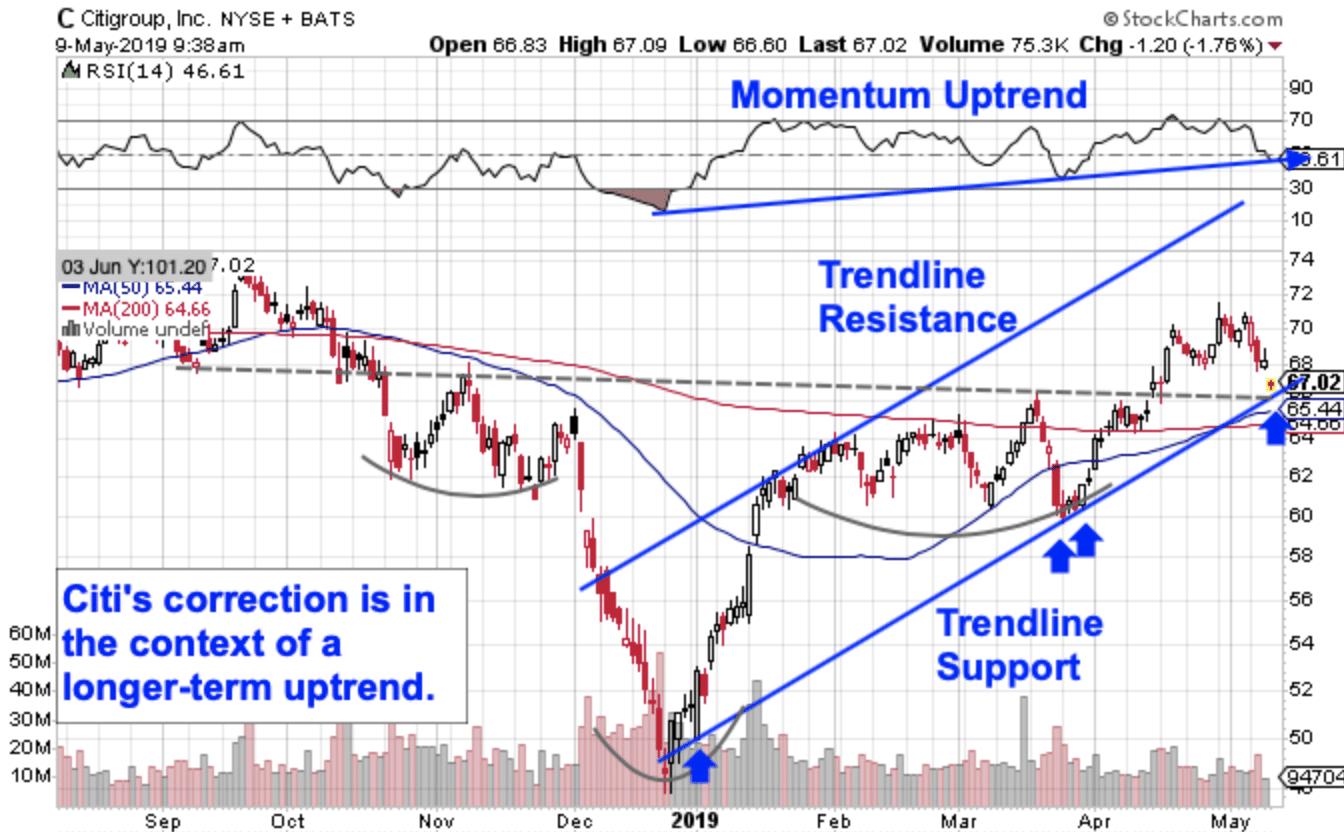
The financial sector is getting pounded to start the day, with the S&P Financial Sector Index down more than 1.4% early in the Thursday session.
Within the sector, banks — and in particular Citigroup (C – Get Report) — are taking it hard. Citi shed 2.5% of its market value so far this afternoon, racking up about a 6% drop since the calendar flipped to January. That’s some pretty ugly underperformance during a stretch when market fissures seem to be forming, and investors anxiety is on the rise.
But it’s a little too early to scratch Citigroup off your buy list. In fact, Citi’s selloff actually looks like it could be a pretty textbook buying opportunity this month.
To figure out how to trade it, we’re turning to the chart for a technical look:

At a glance, it doesn’t take a trading expert to see the prevailing trend in Citigroup’s chart.
Since the final Days of December, this big bank has been bouncing its way higher in a very well-defined uptrend, catching a bid on every test of trendline support on the way up. Now, as shares of Citi close in on that trendline again in May, this looks like a “buy the dips” stock.
Momentum, measured by 14-day RSI up at the top of the chart, adds some extra evidence that buyers remain in control of things long term; momentum has managed to hang onto its uptrend in spite of the recent correction in shares of Citi, signaling that while the month-to-date drop has been unpleasant, it hasn’t been material in the context of the uptrend that preceded it.
That’s confirmed in part by a pretty textbook long-term inverse head-and-shoulders pattern that Citi started forming last fall (in grey on the chart). While much of the financial sector has been showing off this same bullish reversal pattern lately, it’s worth noting that the support level implied by the pattern for Citi right now currently coincides with the support level from the trend.
Typically, seeing converging support from a pair of independent setups tends to add significance to that level.
From here, the move to make is to buy the next bounce higher off of support for Citi.
Waiting for that bounce to happen is a critical part of risk management; traders want to see buyers assert themselves before joining them. Likewise, the 50-day moving average has been acting like a decent proxy for trendline support – that makes it a logical place to park a protective stop, if you decide to take the Citi trade.
Simply put, if Citi violates the 50-day, the uptrend is over and you don’t want to own it anymore.
In the meantime, the May drop in shares of Citigroup looks like a buying opportunity in a longer-term uptrend, not a cause for concern.